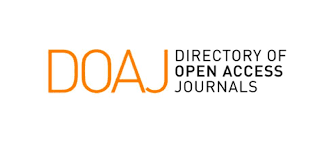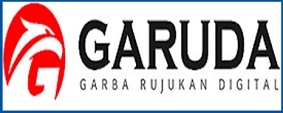Analysis of Electrical Energy Consumption Control System in A-205 JTE PNB Lecture Building Based on Bidirectional Visitor Counter
Abstract
Electrical energy is needed in the A-205 JTE PNB lecture building during the teaching and learning process (PBM). The use of electrical energy includes lighting, Air Conditioning (AC), computers, laptops and LCD projectors. The dominant use of electrical energy is about 8 hours a day. The regulation of electrical energy requires high skilled human resources in making effective use of electrical energy, activating energy-saving behaviors or cultures such as turning off air conditioning and lighting after use. Other efforts are to increase the efficiency of the use of electrical energy, improve the power factor, and replace equipment such as more efficient lighting, more efficient air conditioners. In addition, it can also be done with a tool in the form of a bidirectional visitor counter-based electrical energy control system by installing the control system in each classroom. This control system functions on the use of electrical energy, namely when the classroom is used (there are students/people) the control system works to connect the electric current to the load. On the other hand, when the classroom is not used (there are no students/persons) the control system does not work (does not connect) the electric current to the load. It was found that the use of the control system in the A-205 JTE PNB classroom can save electrical energy by 0.6935 kWh, which is a percentage saving of 23%. This means that the control system based on the bidirectional visitor counter used in the A-205 classroom is more effective in regulating the use of electrical energy so that it can save electrical energy.
Downloads
References
[2] Saikat Sarkar, Satyaki Nan, Pryanikar Ghosh, et al., Bidirectional Visitor Counter with security system and Automated Room Light Controller, IJISRT, v. 2, issue 5, May 2017, pp. 733-736.
[3] Ogherohwo E.P., Igbekele O. J., Jangfa T. Zhimwang, et al., A Bidirectional Automatic Room Light Controller Using Visitor Counter, Nigerian Journal of Physics, vol. 27, 2018.
[4] Rakesh Kumar, Shubhashish Goswami, Digvijay Singh, et al., Automatic Room Light And Other Appliences Controller With Bidirectional Visitor Counter, IJCRT, April 6-7, 2018, pp. 194-208
[5] Subhankar Chattoraj, Aditya Chakraborty, Bidirectional Visitor Counter with Automatic Room Light Controller and Arduino as the master controller, International Journal of Scientific and Research Publications, vol. 6, Issue 7, July 2016, pp. 357-359.
[6] Sarwa Dwipa Pranatha I Kadek, Perencanaan Pemasangan Lampu TL LED Di Ruang Kuliah Teknik Elektro Kelas 205 dan Dampaknya Terhadap Kualitas Pencahayaan, Tugas Akhir, Program Studi Teknik Listrik Jurusan Teknik Elektro Politeknik Negeri Bali, 2020.
[7] Ogata K., Moderen Control Engineering, 3rd Edition, Prentice Hall International. Inc. 1997.
[8] Widjayanti, Profil Konsumsi Energi Listrik Pada Hunian Rumah Tinggal, Enclosure, vol. 6, no. 2, Juni, 2007.
[9] Nur R. Iskandar, Prosedur Audit Energi di Industri, BPPT, 2015.
[10] Djiteng Marsudi, Pembangkitan Energi Listrik Edisi 2, Penerbit: Erlangga, Jakarta, 2011.
[11] Zuriman Anthony, Penggunaan Kontaktor Sebagai Sistem Pengaman Motor Induksi 3-Fasa Terhadap Kehilangan 1-Fasa Sistem Tenaga, Jurnal Momentum, vol. 11, no. 2, 2011.
[12] ABB Low Voltage Components Industrial and Commercial Applications Version 0113. http://www.abb.co.uk/lowvoltage, [Cited 2020 May 10].










